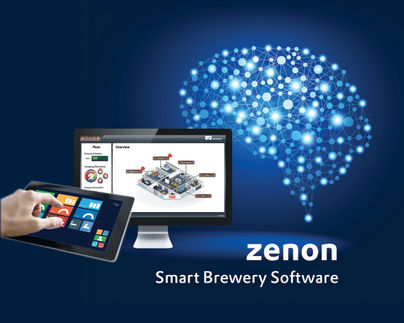New Multi-Product Software: Optimal Sensitivity and Easier Operation
Simultaneous inspection of different products without any manual change
Advertisement
It is standard in the food industry that the quality of products has highest priority at production sites and in stores. raw materials are selected with utmost care in order to meet the demands for highest quality as well as perfect hygienic and sensory properties of the products. Independent experts e.g. by order of retailers in regular intervals asses the production of food processing companies based on criteria of the IFS standard and the HACCP concept.

The multi-product software makes it possible to simultaneously convey and inspect up to 20 different "sub-products".
Sesotec GmbH
Finding more than just metals
X-ray technology now more and more is setting the standard in contaminant inspection because it far better meets the increasing quality demands of the food and packaging industries. It allows high-precision inline detection of many contaminants that have higher density, finds not only magnetic and non-magnetic metals but also glass, ceramics, stones, raw bones, and some types of plastics, even through aluminium packaging or other metallised packing materials. Depending on the application other product defects such as broken, deformed, or missing products, clumping, trapped air, as well as overweight and underweight also can be detected. The combination with modular conveyor belts allows a customer-specific adaptation to different products and local conditions.
Enhancements of the software
Sesotec has developed a multi-product-software for the RAYCON X-ray systems. The previous software also allowed several products in a program, but sensitivity settings were adapted to the most difficult product, which meant a reduced sensitivity for all simple and homogeneous products.
The new multi-product-software automatically detects which product is just passing through the scanner and correspondingly selects a pre-defined parameter set. The advantages are obvious: Different products can be transported through the X-ray scanner in "chaotic" order. Individual products are identified by way of defined image characteristics, and the respective settings, e.g. the sensitivity, are automatically selected for the correct product. It is no longer necessary for the operating staff to perform a manual product change, and every individual product is inspected with maximum sensitivity.
Structure of a normal application
The scanner takes an image of the product to be inspected and checks the product for contaminants. The reject unit is activated when a contamination is detected. If a product is conveyed that has not yet been learned and that is different with respect to packing, product shape, density, etc., the software detects a difference from the saved parameter set and automatically sorts out the product.
It was not possible so far to convey different products at the same time. The multi-product-software now eliminates this restriction. Up to 20 so-called "sub-products" can be defined here. A special product can be learned for each of these sub-products, for example if a can needs a so-called "edge filter" for correct filtering, or if a product must be inspected for weight deviations. Such settings can be defined for every individual product. When a new product is learned product dimensions (length, width), density and homogeneity of the X-ray image are of decisive importance.
When a product passes through the X-ray scanner it is assigned to the respective sub-product by way of the above-mentioned criteria. The inspection for contaminants or other product defects depends on the sub-product settings.
When an "unknown", not yet learned product passes through the scanner it will be assigned to the so-called "default product". This subprogram ensures that products that are not defined or cannot be assigned are automatically separated. "Sub-product" settings only can be set by way of a so-called "autolearn". With this optional special software a manual product change is no longer necessary at the system. This extension not only offers the advantage of minimised set-up times, but also of highly improved sensitivity.
The new software development makes it possible to convey identical products through the scanner on up to four lanes. It also is possible to use different products on the lanes. In this case every lane has its own sensitivity setting. Both cases offer a higher throughput capacity without any loss of detection accuracy.
With the extension the multi-product-software also would make it possible to inspect e.g. ready-made meals with different components – meat, rice, vegetables. Different sectors of an image can be set separately and can be assigned to a corresponding sub-product. For example the counting function can be used here to check whether the meat content is complete, with a simultaneous check for weight deviations in the other sectors.
























































